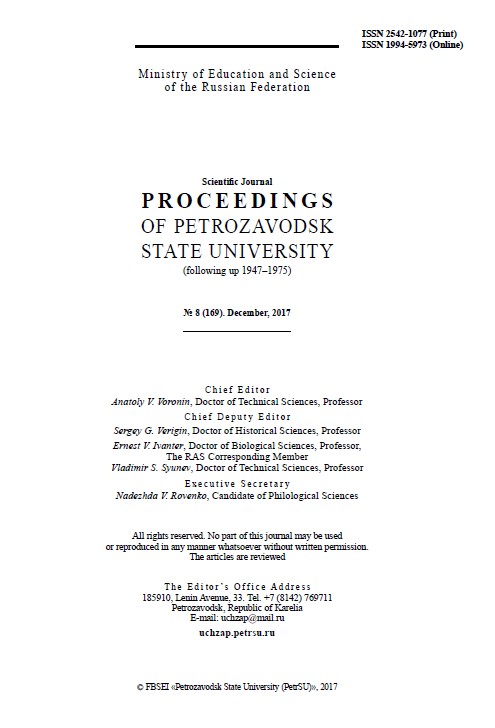ДИНАМИКА ТЕМПЕРАТУРЫ И РАСТВОРЕННОГО КИСЛОРОДА В МЕЛКОВОДНОМ ОЗЕРЕ НА ФОНЕ ПОГОДНОЙ ИЗМЕНЧИВОСТИ
DYNAMICS OF TEMPERATURE AND DISSOLVED OXYGEN IN A SHALLOW LAKE ON THE BACKGROUND OF WEATHER VARIABILITY
Author(s): Galina E. Zdorovennova, Roman E. Zdorovennov, Nikolai I. Palshin, A. Yu. TerzhevikSubject(s): Physical Geopgraphy, Environmental Geography
Published by: Петрозаводский государственный университет
Keywords: a shallow lake; ice period; weather conditions; water temperature; biological summer; dissolved oxygen; anoxia;
Summary/Abstract: The article considers dynamics of the water temperature and dissolved oxygen in a shallow lake for three consecutive years with noticeably different weather conditions. It is shown that the weather conditions of a particular year determine the duration of the ice season, summer stratification, and intensity of the heat exchange with bottom sediments, and, consequently, the speed of the oxygen uptake in the bottom layers of the lake. The interannual variability of the duration of the biological summer reaches a month period due to high variability of the dates of its beginning. It is shown that against the background of cold autumn and spring months, the duration of the ice formation period increases, while the bottom anoxia exists up to six months. The total decrease of dissolved oxygen in the lake exceeds 50 % during winter time, which can lead to catastrophic consequences for the fish community of the lake. Fracturing of the steady ice at the beginning of winter in conditions of the unusually long warm weather, on the contrary, has a positive effect on the oxygen regime of the winter lake. It helps to reduce the total oxygen consumption up to 30 % and to diminishe the severity of bottom anoxia. The abnormally warm weather at the end of winter together with early spring can provoke early under-ice convection development. These conditions are also facilitative in the formation of direct stratification under the ice cover. The intensification of stratification under ice fracturing in conditions of warm, low-winded weather can significantly worsen oxygen conditions in the bottom layers of the lake in the summer. The summer anoxia is markedly weaker than the winter one. The summer anoxia gets its maximum development in conditions of prolonged stratification of water columns.
Journal: Ученые записки Петрозаводского государственного университета
- Issue Year: 2017
- Issue No: 8 (169)
- Page Range: 106-114
- Page Count: 9
- Language: Russian

